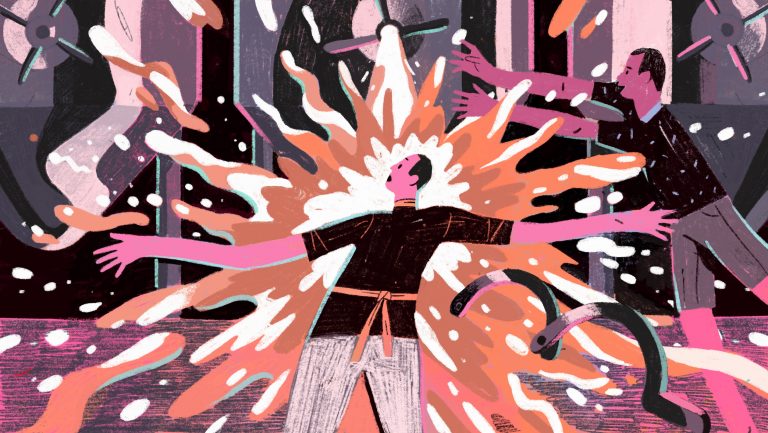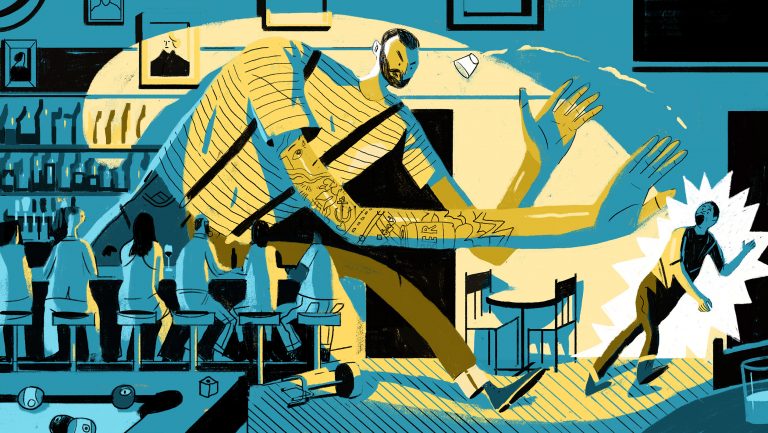Winemaking is a dangerous profession, and harvest accidents are no laughing matter. If you’ve been in the business long enough, you’ve probably heard some frightening stories—the winemaker who was asphyxiated by fumes to the point of coughing up blood, or the one who lost a limb or a digit on the job. Some incidents can even be lethal.
Far more common, however, are the more innocuous mishaps that occur during harvest and crush, when everyone is sleep deprived and everything is at stake. These blunders were horrifying in the moment, but in retrospect, one can’t help chuckling.
We asked winemakers for their best-and-worst harvest and crush anecdotes. We hope, for their sakes, that they never have to relive these moments.

Don’t miss the latest drinks industry news and insights. Sign up for our award-winning newsletters and get insider intel, resources, and trends delivered to your inbox every week.
And by the way, we heard a lot of stories about valves being knocked out of place, resulting in rogue juice gushing out onto the cellar floor, so our last terrible tale also includes some advice for the next time this happens. Because … it will.
“Late in the 2015 harvest, the Cabernet Franc I use for my rosé came in around 7 pm on a chilly October night with a major issue: Asian lady beetles. They’re an invasive species of the common ladybug that was intentionally introduced to combat aphids in soybean production. Earlier, a nearby farmer had harvested soybeans, sending a cloud of ladybugs out looking for shelter to overwinter. While they have no affinity for grapes, the clusters provide ideal shelter—and voilà. A single ladybug in roughly 30 pounds of grapes will spoil the resulting wine with an unmistakably pungent, rancid peanut butter aroma. We spent the rest of the night in the cold and dark, slowly sorting through all the fruit to pick out the individual beetles, with a faint hope that the wine wouldn’t be ruined.
Then, early in last year’s harvest at Red Newt Cellars, one of our interns was cleaning a row of tanks. I suddenly heard a whoosh and saw a tsunami of foamy liquid rocketing across his section of floor. It was peak-fermenting juice (still at 200 g/l sugar) from a 3,000-gallon tank … Three of us managed to attach a new valve, and we only lost 50 gallons. Unfortunately, it took me another two hours before I could get to a shower, all the while dripping in the ferment, and I ended up with a yeast infection. Yes, that kind. Yes, there.”
—Kelby James Russell, winemaker, Red Newt Cellars, Empire Estate Wines, Terrassen, and his own eponymous label, Finger Lakes, NY
“At Hanging Rock Winery in the Macedon Ranges [in Australia], the shotgun I was holding to take to the vineyard to clear birds accidentally discharged in the winery courtyard, making a nice hole in the barrel hall wall and embedding the shot in a barrel of Chardonnay. Flinty, indeed.”
—Andrew Bandy-Smith, winemaker, Antiquum Farm, Junction City, OR
“At Rosa d’Oro Vineyards [in Lake County, CA], I accidentally popped a loose bottom valve off a 1,000-gallon tank at 7 am. I spent the next four hours holding back 1,000 gallons with the palm of my hand and yelling ‘Help!’ at the top of my lungs. I kept having to switch hands. It hurt. A lot.”
—Pietro Buttitta, winemaker, Prima Materia, Oakland, CA
“In 2013, I was working for Pacific Rim as a cellar intern. I put a Guth tank mixer in an actively fermenting 18,000-gallon tank to mix in the DAP [diammonium phosphate]. I learned about the Mentos reaction.”
—Landon Sam Keirsey, cider maker, Bad Granny Hard Cider, Chelan, WA
“It was 2010 at Evening Land Vineyards. The intern—who’s widely disliked by the crew for not working and wearing flip-flops to work—drinks waaay too much at lunch, asks to be nicknamed Beaver, then says he wants to ‘get busy’ with the vineyard manager’s wife and … poof! Gets fired within a week of arriving and has to fly all the way back home.”
—Ian Burch, winemaker, Archery Summit, Dayton, OR
“At Murdoch James Estate in Martinborough, New Zealand, one night I was pressing probably the hundredth load of Sauvignon Blanc. I would manually inflate the press, set an alarm for three minutes, fall asleep with my head against the press, then depressurize and rotate it when the alarm went off—on and on for the press cycle. Just me and this other intern, from Chile, were in the winery at the time. He was super obnoxious because he hit on every female really aggressively and relentlessly. And he wore really short cutoff jeans and knee-high white rubber boots. I heard a splash from where he was doing punchdowns, then a splatter, and then a squish-squish-squish. He was soaked, running across the winery covered in Cab Franc and leaving a huge trail. That one was just funny.”
—Brianne Day, winemaker, Day Wines, Dundee, OR
“I was the assistant winemaker at Bonny Doon Vineyard—it must have been the harvest of 2002 or ’03. I came around a corner in the cellar to see a horizontal stream of dark-red must, about two inches wide, gushing, uncontrolled. I found one of our interns covered in wine, leaning against the tank, terrified, his hands clamped against the hole where a two-inch racking valve used to be. (He had accidentally unhooked the tank-side valve clamp instead of the outer clamp while doing a pump over.) His two hands were no match for 24 tons of grapes and gravity. By grabbing a two-inch ball valve from the fittings board, opening it, and clamping it onto the two-inch hole, then wrenching the valve closed, we managed to plug the hole. We quickly moved the wine to another tank from the bottom valve and saved most of it.
Applying an open ball valve is a cellar trick I hope I never have to use again, but it’s a good remedy if a valve is accidentally knocked off. Needless to say, after that incident it became our standard policy to hard-clamp valves to tank openings instead of using the traditional, but too easily removed, hand-tightened clamps.”
—Alison Crowe, winemaker, Garnet Vineyards, Napa, CA

Dispatch
Sign up for our award-winning newsletter
Don’t miss the latest drinks industry news and insights—delivered to your inbox every week.
Katherine Cole is the author of four books on wine, including Rosé All Day. She is also the executive producer and host of The Four Top, a James Beard Award–winning food-and-beverage podcast on NPR One. She is currently working on a fifth book, Sparkling Wine Anytime (Abrams), to be published in Fall 2020.







